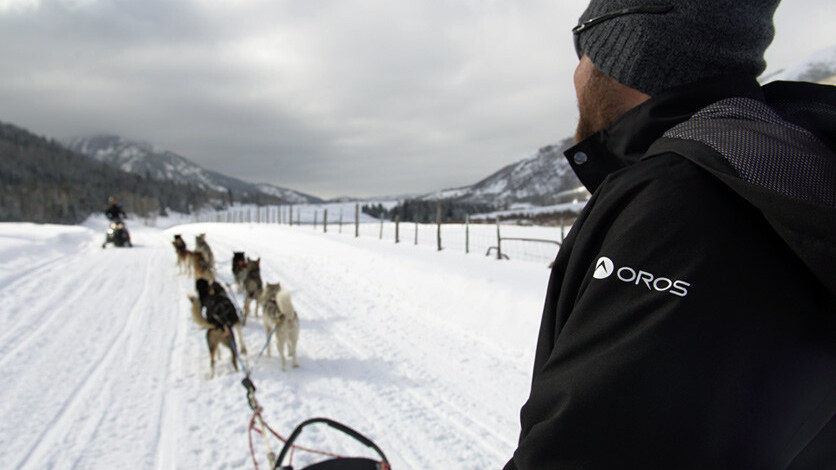
Oros, a new apparel label, has found a way of incorporating the material found in NASA’s spacesuits to keep astronauts warm and added it to clothing you can wear on earth.
The company is about to finish raising funds via a Kickstarter campaign. At the time of writing, Oros had surpassed its $310,000 funding goal by more than $12,000.
The magic material, called aerogel is the lowest thermal conductive solid on the planet. In plain English, that means aerogel is the best insulator currently available against the cold. It has been used extensively to help prevent the circuitry of the Mars rovers from freezing and insulate oil pipes across Russia’s arctic tundra.

Historically the material has been extremely expensive and prone to shattering as Michael Markesbery, Oros’ co-founder, explains.
Several institutions have tried implementing aerogel in apparel. The aerogel they used had a series of problems, making it very difficult to work with. One, it was incredibly expensive, not leaving a whole lot of margin for the brand. Two, the aerogel particles were embedded in a fiber. With movement, the aerogel particles would come loose from the fiber (meaning, every time you’d move, you’d lose thermal performance from your garment). Three, these particles, if they came in contact with your skin, would dry it out like you wouldn’t believe.
As a result, the team spent two years developing a way of making aerogel work in clothing. The result was aerogel Solarcore – the company’s own propriety blend. The material is just 3mm thick and can withstand temperatures as low as minus 58 degrees Fahrenheit says Markesbery.
Oros is so confident of the material’s abilities, employees from the company sprayed a jacket with liquid nitrogen while someone was wearing it, which you can see in the video above.
I had the chance to wear the Orion coat for a week and it’s certainly impressive. In cold weather I rely on my enormous Canada Goose Expedition coat. It’s lined with duck down feathers, which are one of nature’s best insulating materials. But it means you have to stuff a lot of feathers in your coat to keep you warm in icy conditions.
If you’re schlepping around a snowy field, the duvet-like feel is a dream. If however, you’re commuting on London’s Underground with a backpack and your dog in tow, it’s cumbersome and difficult to manoeuvre in.
“Most insulations require loft — that puffiness, the Michelin man look, the volume — to maintain their thermal performance,” explains Markesbery.
“If you compress these insulations, like goose down, they lose their thermal performance. Solarcore is one of the few insulations in the world that doesn’t require loft to maintain its thermal performance.”

Oros offers the same warmth in a jacket that looks more like something you’d wear on a jog around the park. It’s a bit stiffer than most coats, thanks to the Solarcore lining. But when zipped up it hugs the contours of your torso creating a snug, warm feel. The company has also produced gloves, hats and trousers – the latter of which will be offered if fundraising hits $500,000.
The brand is aimed at climbers and outdoorsy types who want to reduce the amount of layers they need to carry around with them. But like Canada Goose, its success came when city dwellers embraced the clothing as not only a practical piece of apparel, but as a fashion statement. I’d certainly wear one.
Oros plans on shipping its Orion jackets in October.
➤ Oros
Get the TNW newsletter
Get the most important tech news in your inbox each week.





